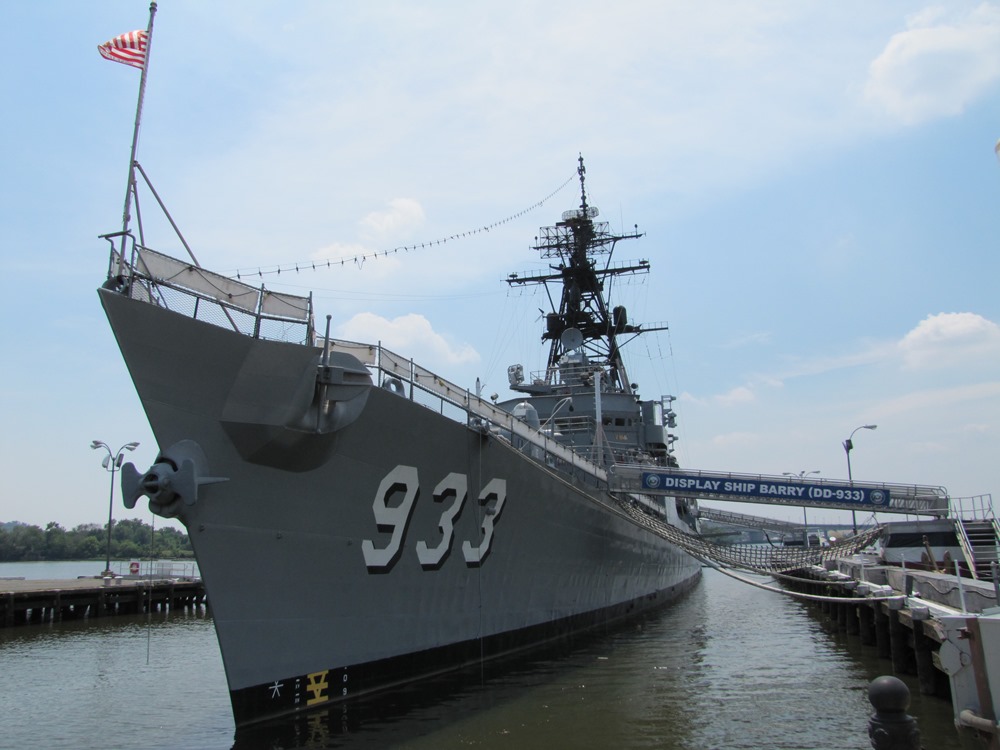Scrapped at Brownsville, TX. Completed by 11 February 2022
USS Barry - DD-933



International Call Sign: November-India-Yankee-Juliet
The USS Barry (DD933) is one of only three remaining Forrest Shermans, and the fourth vessel to bear the name of the illustrious Revolutionary War naval hero, Commodore John Barry.
Commissioned in 1956, Barry served 26 years in the Atlantic and Pacific Fleet. Barry supported the 1958 Marine and Army airborne unit landing in Beirut, Lebanon. In 1962, she was a member of the task force that quarantined Cuba in response to evidence that Soviet missiles had been installed on the island. In Vietnam, the destroyer operated in the Mekong Delta and supported Operation Double Eagle, the largest amphibious operation since the landings in Korea. Barry was credited with destroying over 1,000 enemy structures, and for her service in the Vietnam conflict Barry earned two battle stars. In the early 1970s she was homeported in Athens, Greece, as part of the Navy's forward deployment program.
USS Barry was decommissioned on 5 November 1982 and began her new career as a permanent public display ship in 1984. Used for training and shipboard familiarization, and as a ceremonial platform the Barry is one of the most popular visitor destinations on the Washington Navy Yard.
The number of visitors to DS Barry began to decline after 1990, and by 2015 had dwindled to only about 10,000 people per year. Although Barry's hull remained seaworthy, it had begun to deteriorate. She required about $2 million in repairs and renovations, an amount the U.S. Navy deemed unaffordable given the low annual number of visitors. Meanwhile, the District of Columbia government had made plans to replace the existing Frederick Douglass Memorial Bridge, a swing bridge, with a new bridge, construction of which was to begin in October 2015. The District of Columbia considered replacing the Frederick Douglass Memorial Bridge with another swing bridge but found that adding a swing capability to the new bridge would add $140 million to its cost plus an additional $100,000 per year for maintenance; instead, the city government opted for a fixed-span bridge that, when complete, would trap Barry in the Anacostia River.
For all these reasons, the U.S. Navy decided to close DS Barry and tow her away for scrapping before construction of the new bridge advanced to the point of trapping her in the Anacostia River. During the summer of 2015, representatives of the U.S. Navy's Naval History and Heritage Command, followed by representatives of approved non-profit museum ships, visited Barry and removed artifacts from her for display elsewhere, with communications gear being the most popular items. A formal departure ceremony for the ship hosted by Naval Support Activity Washington, attended by more than 50 former Barry crew members and featuring a speech by retired Rear Admiral Sam Cox, director of the Naval History and Heritage Command, took place on 17 October 2015 in the Cold War gallery at the Washington Navy Yard.
On 7 May 2016, DS Barry had her masts cut down and, with a mixed caretaker crew of U.S. Navy and towing company personnel aboard was towed from the Washington Navy Yard by the commercial tugs Emily Ann, Meagan Ann, and Thomas D. Witte. As the ship was towed down the Anacostia River to the Potomac River, a Washington, D.C., fireboat saluted her with a water cannon display, and Joint Base Anacostia-Bolling played the U.S. Navy anthem "Anchors Aweigh" over loudspeakers ashore. Barry was to make a 50-hour journey via the Potomac River, Chesapeake Bay, Chesapeake and Delaware Canal, and Delaware River to the inactive ship facility at the Philadelphia Naval Shipyard, from which she had been towed to Washington in 1983. There she would be mothballed and sold for scrapping. Scrapping was completed by 11 February 2022.


